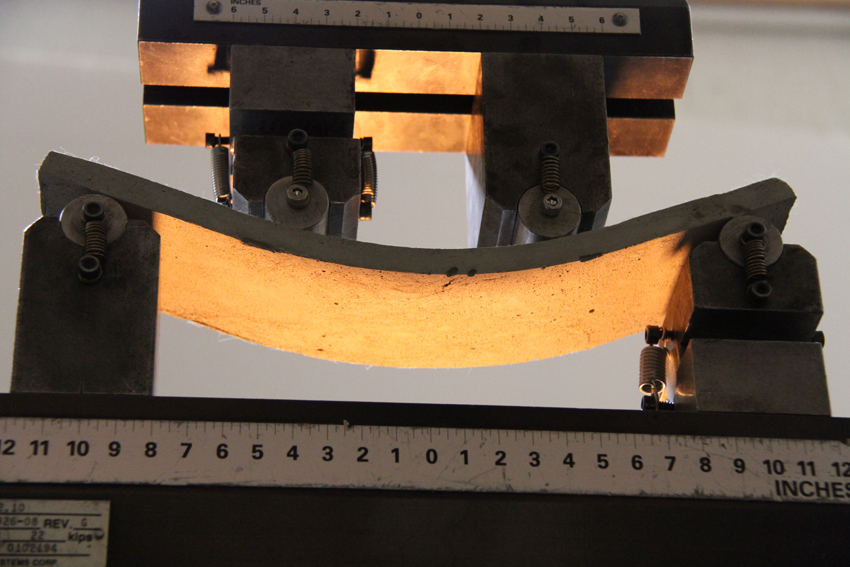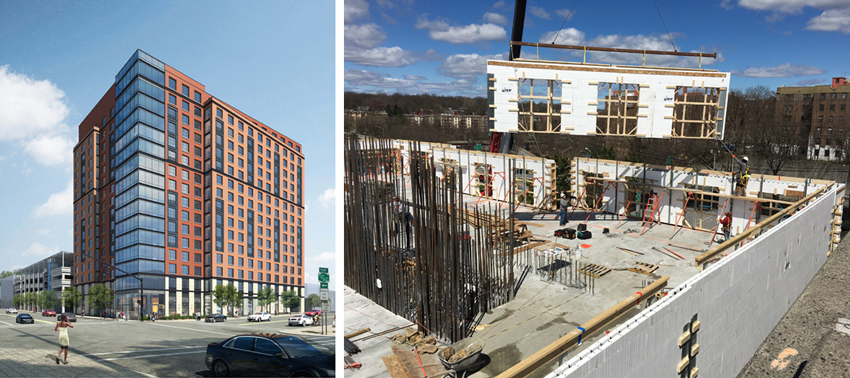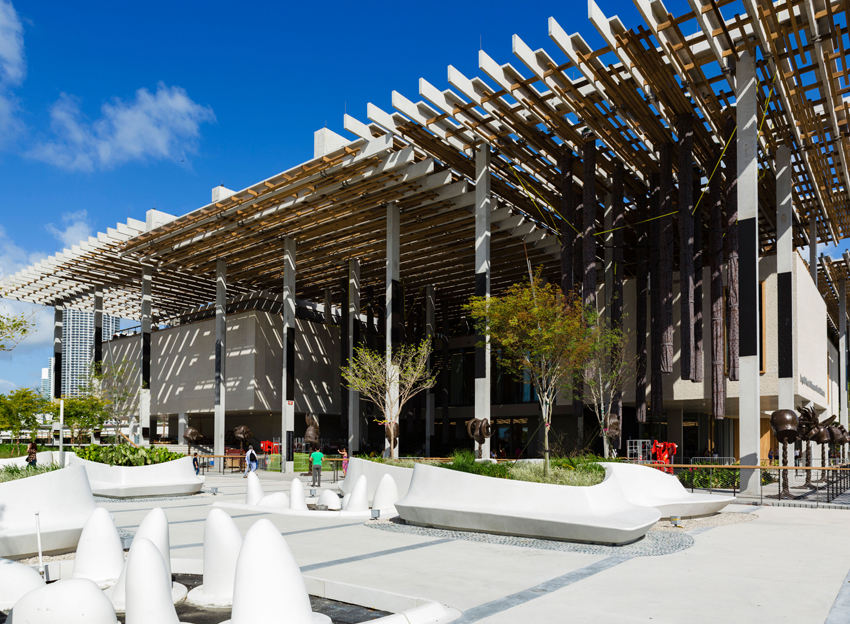Concrete Innovations
Bendable Concrete
Bendable concrete presents an efficient alternative primarily in the construction and maintenance of infrastructure, where concrete is subject to harsh weather conditions and extreme loading. The design that gives bendable concrete, or engineered cementitious composite (ECC), its impressive ductility is based off nacre, the substance that coats the inside of abalone shells. Nacre is composed of small aragonite platelets that are held together by natural polymers, allowing it to be both hard and flexible, as platelets are free to slide from side to side under stress. This effect is mimicked in bendable concrete by dispersing tiny fibers throughout. Victor C. Li of the University of Michigan, where ECC was first researched and invented, states that bendable concrete “can deform up to 3 to 5 percent in tension before it fails, which gives it 300 to 500 times more tensile strain capacity than normal concrete.” It is this ability to tolerate tensile strain that makes bendable concrete unique.

Photo: Victor C. Li
Bendable concrete is 300–500 times more ductile than conventional concrete.
This enormous increase in ductility suggests various potential applications. Firstly, in roads as well as other paved surfaces that must bear repeated loading of heavy vehicles, bendable concrete would crack less often, preventing further weathering primarily from road salts that corrode steel reinforcement. Further, due to ECC’s capacity to absorb greater quantities of energy without being damaged, it can be used to make reinforcing elements, such as the dampers on the Seisho Bypass Viaduct in Japan, which is roughly 28 kilometers long. Dr. Li states that ECC has been employed as earthquake resistance in tall buildings in Tokyo and Osaka, and suggests that it would also be useful in underground and water infrastructure construction.
However, before it can be more widely commercialized for such large-scale projects, bendable concrete must first become more readily available. To be economically viable, it needs to be supplied efficiently and not overused on projects. It is paramount that design professionals be made aware of the product and its potential, as they might otherwise overlook a promising concrete option for structures that require the ability to deal with considerable tensile strain.
Bendable concrete also has self-healing capabilities. Because bendable concrete keeps cracks relatively small, natural reactions within the hardened concrete generate “healing” through carbon mineralization and continuous hydration, which repairs the cracks and restores the durability of the concrete. Bendable concrete is a promising technology that already has proven itself through commercialization by several companies.
In fact, fiber-reinforced concrete is not new. Many companies supply fibers for use in concrete to improve its strength and durability in some way. Fiber-reinforced concrete accomplishes this by incorporating fibers made of steel, glass, or organic polymers (plastics). Sometimes naturally occurring fibers such as sisal and jute have been used as well. These fibers are primarily used to combat plastic shrinkage and drying shrinkage, which can otherwise crack and damage the concrete. This resistance to shrinkage and subsequent cracking is the key to extending the lifespan of concrete, decreasing the frequency of costly repairs. Fibers also keep existing cracks from widening and further damaging the concrete when they do appear. More recently, steel fibers have been used in structural applications to reduce the amount of traditional steel reinforcing bars, saving time and labor.
Ultra-High-Performance Concrete (UHPC)
One building product manufacturer became one of the first companies to commercialize bendable concrete with an ultra-high-performance concrete (UHPC) that incorporates fibers into the concrete mixture to improve strength and ductility, along with a host of other benefits. The manufacturer states that it uses “high-carbon metallic fibers, stainless fibers, poly-vinyl alcohol (PVA) fibers, or glass fibers” to increase the concrete’s ability to withstand tensile loads and deformation.
This UHPC is also less porous than conventional concrete, making it more resistant to chlorides, acids, and sulfates. It is also generally much more impermeable to water, making it ideal for roofing as well. In addition, this UHPC has self-healing properties. This bendable concrete has been thoroughly researched and is commercialized.2
Graphene Concrete
Graphene concrete is made by suspending flakes of graphene in water and then mixing the water with traditional concrete ingredients, such as cement and aggregate. Graphene concrete is concrete reinforced by graphene. Graphene is a single layer of carbon atoms, tightly bound in a hexagonal honeycomb lattice. Layers of graphene stacked on top of each other form graphite, a naturally occurring, crystalline form of carbon most commonly used in pencils and lubricants. The separate layers of graphene in graphite can be separated into sheets only one atom thick. Graphene is the thinnest compound known to man, the lightest material known, and the strongest compound discovered—more than 100 times stronger than steel.
This technology’s strength largely lies with its accessibility given that it is inexpensive and compatible with modern, large-scale manufacturing requirements. According to a research paper published in the Advanced Functional Materials journal titled “Ultrahigh Performance Nanoengineered Graphene – Concrete Composites for Multifunctional Applications,” graphene concrete impressively shows a “146 percent increase in compressive strength as compared to regular concrete, a 79.5 percent increase in flexural strength, and a decrease in water permeability of almost 400 percent.” In addition to its increased strength, graphene concrete is also more environmentally friendly since it requires less cement than is typically required to produce concrete at a specified strength. Alternatively, higher-strength graphene concrete could be used to produce smaller structural elements, thus reducing the amount of material used.3











